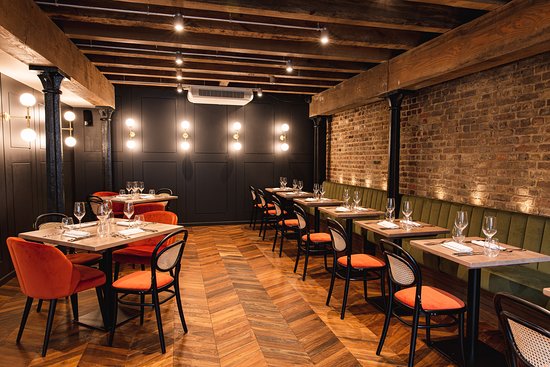Virtual Restaurants
Virtual restaurants are businesses that operate online and have no physical locations. They have been around for a while alongside third-party delivery services like UberEats and DoorDash. The pandemic has changed the dominant business model and drastically increased its reach. In the past, virtual restaurants were often vertically integrated. Maple and Green Summit, for example, owned and operated ghost kitchens. Sometimes they even delivered. In 2020, Next Bite and Franklin Junction saw an increase in interest. These companies connect virtual brands to independent restaurants with additional kitchen capacity. These restaurants can fulfill orders for delivery from different virtual brands. As a way of increasing their capacity, restaurant operators turned to new brands to survive.
These new brands focus on QSR items that are easy to transport and have a simple design. The most popular U.S. delivery option for chicken wings is UPS. These brands can be searched in the app. This is an acknowledgment of the many commodity product manufacturers that can be found on Amazon for items like phone chargers or selfie sticks. Because they are less expensive to start and can be optimized for menus, virtual restaurants offer more flexibility than brick-and-mortar restaurants. In 2020, virtual brands that were successful focused on high-demand items. There are often only one or two signature products per brand. These items are easy to source from many kitchens and can be made quickly. These brands allow customers to order certain items through apps, which are designed to satisfy their hunger.
Virtual brands have been a major topic in the delivery debate over the past year and quarter. It is not clear whether this trend will continue or if there is a shift in restaurant business models. Consumers are still ordering delivery. It's not about whether consumers will stop ordering delivery wings, but rather how and where they are prepared. Still, dedicated ghost kitchens are being constructed. They could be much more efficient in the long-term delivery and storage of most commodities as automation investments grow.
In any city, the question is whether it's cheaper to make wings, pizza, and pad thai, or if they can be delivered faster. There are many small kitchens, or there may be a few larger, more centrally-controlled, automated facilities. The remaining capacity for independent restaurants will decrease as the pandemic ends. Independent restaurants may find it harder to manage their own kitchens due to virtual brands.
An overview of the larger retail industry can help you to understand the future direction of the restaurant industry. Over the past 10 years, there have been many online-only, direct-to-consumer retail businesses. Many of these companies have been acquired or closed. Leaders have now shifted to an omnichannel strategy that combines delivery and apps with limited physical stores. These stores are an integral part of brand marketing. These stores create memorable experiences that encourage repeat customers, just like great restaurants. Although they are not branded, online-only sellers have experienced an increase in sales of consumer goods. The main distinguishing factors are price and search engine optimization.
Virtual brands and ghost restaurants are growing rapidly. A similar trend could also be observed in the restaurant industry. Omnichannel operators may replace premium fast-casual brands with omnichannel operators that combine in-store presentations and dedicated apps, activities such as cooking classes or shoppable recipes. This will encourage long-term engagement. With highly optimized facilities that produce a wide range of low-priced and fast favorites, a host of delivery times could be reduced.
Know more at RestaurantZone.

